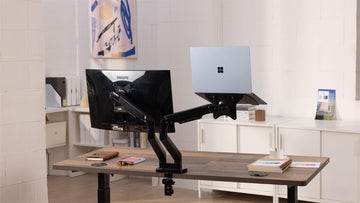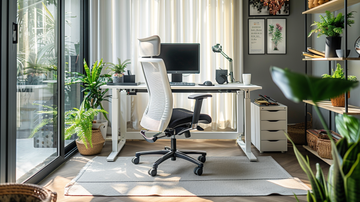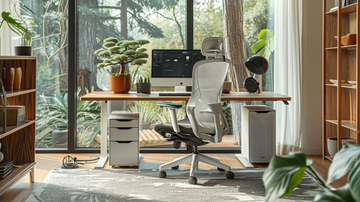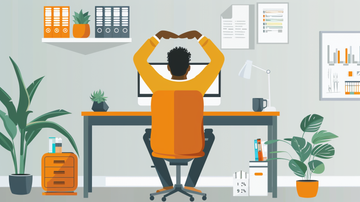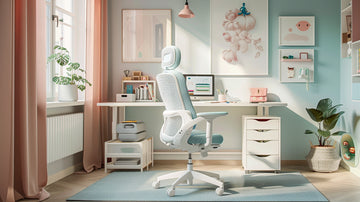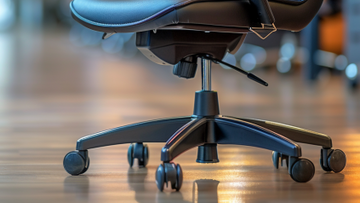Understanding the Benefits of a Two-Monitor Setup
A two-monitor setup offers numerous advantages that can enhance productivity and workflow efficiency. According to AVAccess, dual monitors allow you to multitask seamlessly by having separate applications or windows open on each screen. This eliminates the need for constant window switching and enables you to reference information on one monitor while actively working on the other.
Furthermore, a two-monitor configuration can improve ergonomics by reducing neck strain and eye fatigue. With the ability to distribute content across multiple displays, you can position your monitors at an optimal viewing angle, minimizing the need for excessive head movements. This promotes better posture and reduces the risk of musculoskeletal discomfort associated with prolonged computer use.
Determining the Ideal Desk Size
When setting up a two-monitor workspace, the ideal desk size is crucial for maintaining proper ergonomics and maximizing productivity. According to Branch Furniture, a desk width of at least 48 to 60 inches (122 to 152 cm) is generally recommended for accommodating two monitors side by side. This range provides ample space for monitor placement while allowing for comfortable arm and wrist positioning.
However, it's essential to consider additional factors beyond just the desk width. Ergonofis suggests a minimum depth of 30 inches (76 cm) to ensure sufficient arm space and maintain proper posture. Additionally, your available room dimensions and spatial constraints may influence the maximum desk size you can accommodate.
Factors to Consider for Monitor Placement
When setting up a dual-monitor configuration, several factors should be considered to ensure an ergonomic and efficient workspace. According to the University of California Office of the President's ergonomics guide (https://www.ucop.edu/safety-and-loss-prevention/_files/ergonomics/dual-monitors.pdf), monitor size plays a crucial role in determining the ideal viewing distance and height. For monitors 30 inches or larger, the top of the screen should be at or slightly below eye level.
Desk depth is another important consideration, as it needs to accommodate the monitors while leaving sufficient space for other desk items and comfortable arm positioning. Reddit users suggest positioning the monitors side by side, with the primary monitor directly in front and the secondary monitor slightly angled inward (https://www.reddit.com/r/AskBattlestations/comments/hm9ioo/how_do_you_guys_position_your_dual_monitors_one/). Proper cable management is also essential to avoid clutter and maintain a tidy workspace.
Desk Configuration Options
When setting up a two-monitor setup, the desk configuration plays a crucial role in ensuring an ergonomic and productive workspace. Here are some popular options to consider:
1. L-shaped Desks: An L-shaped desk offers ample space for a two-monitor setup, allowing you to position the monitors at an angle that reduces neck strain. This configuration is particularly useful if you frequently need to refer to both screens simultaneously.
2. Corner Desks: Similar to L-shaped desks, corner desks provide a dedicated space for each monitor, creating a seamless dual-screen experience. This setup is ideal for maximizing desk real estate and keeping your workspace organized.
3. Straight Desks: If you prefer a more traditional layout, a straight desk can accommodate a two-monitor setup by placing the monitors side by side. This option works well if you have a large enough desk surface to accommodate both monitors comfortably. According to a Reddit discussion, some users prefer this configuration for its simplicity.
4. Adjustable Standing Desks: For those who value ergonomics and the ability to alternate between sitting and standing, an adjustable standing desk can be an excellent choice. Many standing desks are designed to accommodate multiple monitors, allowing you to maintain a comfortable viewing angle whether seated or standing.
Ergonomic Tips for a Comfortable Setup
Proper ergonomics is crucial for a comfortable and productive two-monitor setup. First, position the top of each monitor at eye level to maintain good posture and avoid neck strain (Source). Tilt the monitors slightly back to reduce glare and adjust the viewing angle for optimal visibility.
Place your keyboard and mouse in a position that allows your arms to rest comfortably at your sides, with your elbows bent at a 90-degree angle. Consider using a keyboard tray or wrist rest to alleviate pressure on your wrists. Additionally, a monitor arm or stand can help you adjust the height and angle of your displays for personalized comfort.
Finally, ensure adequate desk space for any accessories you may need, such as a notepad, phone, or headset. A cluttered desk can lead to discomfort and decreased productivity, so keep your workspace organized and free of unnecessary items.
Maximizing Productivity with a Two-Monitor Setup
A two-monitor setup can significantly boost productivity by allowing you to multitask more efficiently and streamline your workflow. One effective strategy is to dedicate one monitor for your primary application or task, while using the second monitor for reference materials, communication tools, or supplementary applications. This separation of tasks can help minimize distractions and context switching.
Window management is crucial for optimizing your dual-monitor setup. Most operating systems offer keyboard shortcuts and built-in features to easily snap windows to different portions of the screen or move them between monitors. For example, in Windows, you can use the Win+Left/Right keys to snap windows to the left or right side of the current monitor, and Win+Up/Down to maximize or restore windows.
Additionally, consider investing in productivity software or utilities that provide advanced window management capabilities, such as virtual desktops, customizable hotkeys, and automatic window positioning. These tools can further enhance your ability to organize and navigate between multiple applications and tasks seamlessly.

